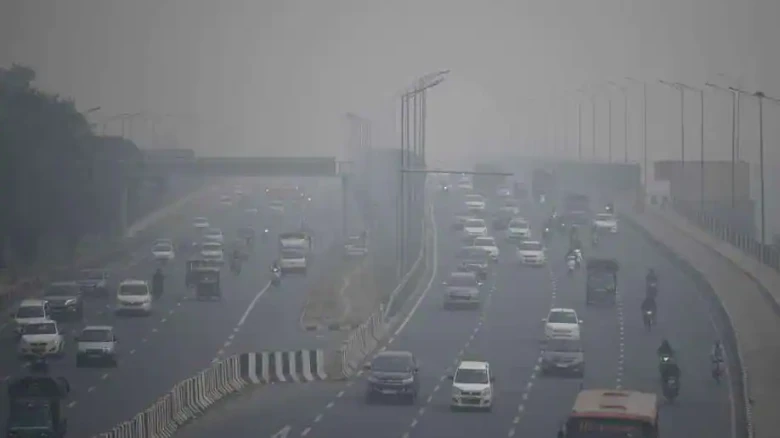National

As per the report, almost half a billion people from Punjab to West Bengal will lose 7.6 years of life expectancy if current pollution levels continue.
Digital Desk: Delhi is the world's most polluted city, with air pollution shortening lives by about 10 years in Delhi and 9.5 years in Lucknow, Air Quality Index by the Energy Policy Institute of the University of Chicago (EPIC) reports said.
A pollution statistic estimates the impacts of particulate air pollution on life expectancy.
The Indo-Gangetic Plain is the world's most polluted region. As per the report, almost half a billion people from Punjab to West Bengal will lose 7.6 years of life expectancy if current pollution levels continue.
Hence, air pollution is more harmful than smoking, which shortens life expectancy by 1.5 years and reduces infant and maternal malnutrition by 1.8 years.
While India is the second most polluted country in the world after Bangladesh, the vast Indo-Gangetic Plain is even worse, with PM 2.5 levels in 2020 measuring 76.2 micrograms per cubic metre compared to 75.8 ug/m3. India's average is much lower at 56.8 micrograms per cubic metre. Still, if north India is excluded, the remainder of India's PM 2.5 level drops even further to under 40 micrograms per cubic metre.
The PM 2.5 level in Delhi measured 107.6, more than ten times the WHO's safe limit of just 5. PM 2.5 is a microscopic particle made up of hazardous compounds that settle deep within the lungs and other organs, evading the body's natural defenses.
Notably, the report's authors term it the world's greatest public health issue, with dangers beginning in the womb.
Despite the lockdown, India's air pollution levels continued to increase in 2020, cutting the average Indian life expectancy by five years, compared to 2.2 years globally. This is a pan-South Asian issue, with escalating levels in Pakistan and Bangladesh.
The reasons behind this are obvious. Vehicle traffic and coal-fired power plants have increased three to four times across the region over the last two decades. Crop burning, brick making, and other industrial activities have added to the problem.
During this time, India's particle pollution has skyrocketed. According to EPIC's analysis, annual particle pollution has increased by 61.4 percent since 1998.
Since 2013, India has accounted for almost 44% of the global rise in pollution. Explaining it, the Director of AQLI, Dr. Christa Hasenkopf, said, "There was a global drop in PM2.5 from 2013 to 2020."
"But, if you calculate the average increase for countries that experienced an increase over that time period, India accounts for a significant share of that increase - which is what that statistic refers to. Because of its vast population, India has a significant impact on global population-weighted average pollution levels," he added.
Incidentally, China has reduced its emissions by nearly 40% since 2013. As per the report, most of this achievement stemmed from a "command and control" strategy that "usually does not explore how to reduce the costs of attaining their aims."
Outside of the peak-pollution winter months, air pollution scarcely registers as a political concern in India. That isn't to suggest that nothing has happened. There's been an alphabet soup of agencies and programs - CPCB, EPCA, GRAP, NCAP, and most recently, CAQM, a powerful authority that took some actions last winter to reduce pollution in the Capital, most notably shutting down coal-fired power stations.
However, overall air pollution has remained severe, and as this report points out, remedies that are not Delhi-centric are urgently needed.
Leave A Comment